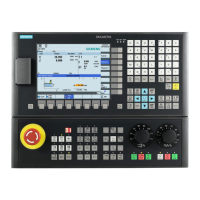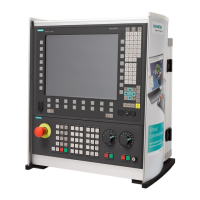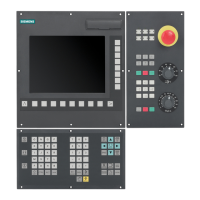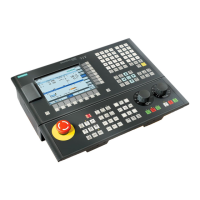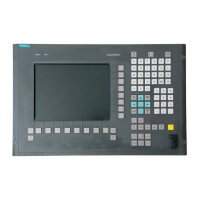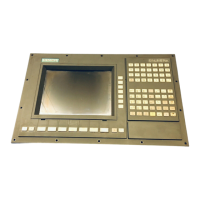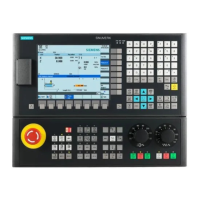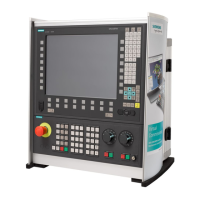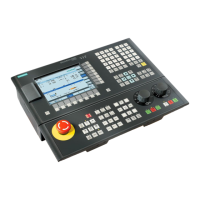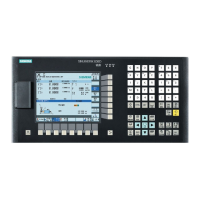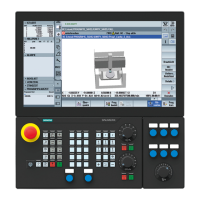R2: Rotary axes
12.3 Programming rotary axes
Extended Functions
Function Manual, 03/2013, 6FC5397-1BP40-3BA1
689
Absolute programming (AC, ACP, ACN, G90)
Example for positioning axis: POS[axis name] = ACP(value)
● The value identifies the rotary-axis target position in a range from 0° to 359.999°.
Negative values are also possible if a range offset has been realized with the following
machine data:
MD30340 $MA_ MODULO_RANGE_START
MD30330 MA_MODULO_RANGE
●
ACP (positive) and ACN (negative) unambiguously define the rotary-axis traversing direction
(irrespective of the actual position).
● When programming
AC exclusively or with G90, the traversing direction depends on the
rotary-axis actual position. If the target position is greater than the actual position, the
axis traverses in the positive direction, otherwise it traverses in the negative direction.
The positioning behavior can be configured via:
MD30455 $MA_MISC_FUNCTION_MASK bit 2
Bit 2 = 0: with
G90, modulo axis positioned as standard using AC
Bit 2 = 1: with
G90, modulo axis positioned as standard using DC (shortest path)
● Use of ACP and ACN: With asymmetrical workpieces, it must be possible to define the
traversing direction in order to prevent collisions during rotation.
Example:
C starting position is 0° (see figure below).
①
POS[C] = ACP(100)
Rotary axis C traverses to position 100° in the positive direction of
rotation
②
POS[C] = ACN(300)
C traverses to position 300° in the negative direction of rotation
③
POS[C] = ACP(240)
C traverses to position 240° in the positive direction of rotation
④
POS[C] = AC (0)
C traverses to position 0° in the negative direction of rotation
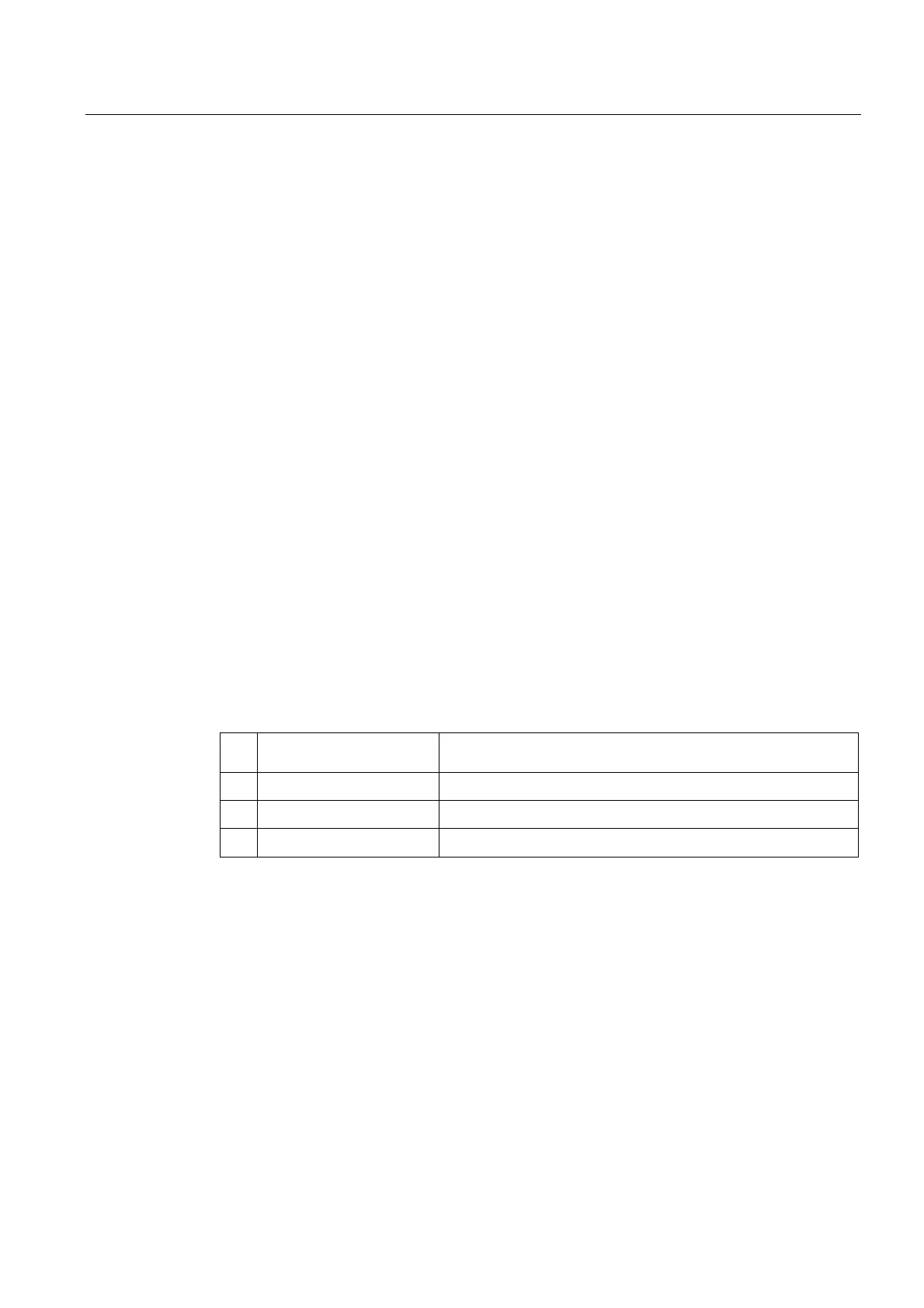